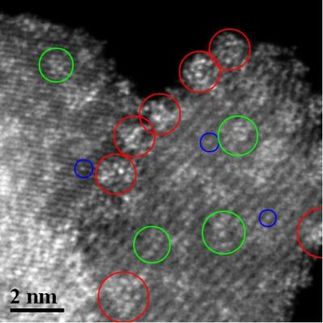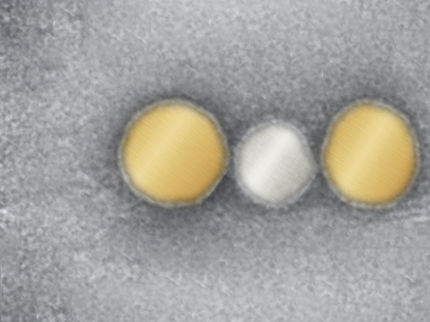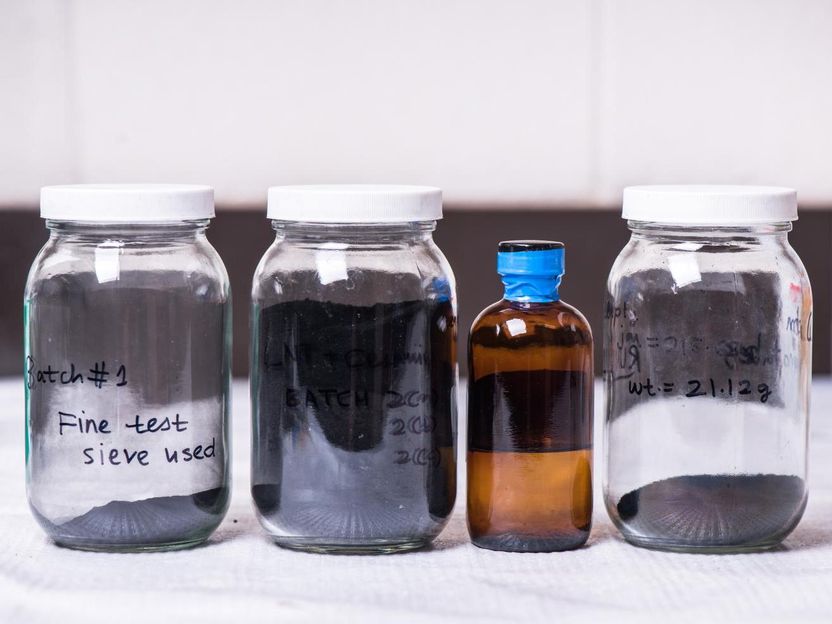Ultrasensitive imaging method uses gold-silver 'nanocages'
Advertisement
New research findings suggest that an experimental ultrasensitive medical imaging technique that uses a pulsed laser and tiny metallic "nanocages" might enable both the early detection and treatment of disease. The system works by shining near-infrared laser pulses through the skin to detect hollow nanocages and solid nanoparticles - made of an alloy of gold and silver - that are injected into the bloodstream.
Unlike previous approaches using tiny metallic nanorods and nanospheres, the new technique does not cause heat damage to tissue being imaged. Another advantage is that it does not produce a background "auto fluorescent" glow of surrounding tissues, which interferes with the imaging and reduces contrast and brightness, said Ji-Xin Cheng, an associate professor of biomedical engineering and chemistry at Purdue University.
"This lack of background fluorescence makes the images much more clear and is very important for disease detection," he said. "It allows us to clearly identify the nanocages and the tissues."
The improved performance could make possible early detection and treatment of cancer. The tiny gold-silver cages also might be used to deliver time-released anticancer drugs to diseased tissue, said Younan Xia, the James M. McKelvey Professor for Advanced Materials in the Department of Biomedical Engineering at Washington University in St. Louis. His team fabricated the nanocages and nanoparticles used in the research.
The gold-silver structures yielded images 10 times brighter than other experimental imaging research using gold nanospheres and nanorods. The imaging technology provides brightness and contrast potentially hundreds of times better than conventional fluorescent dyes used for a wide range of biological imaging to study the inner workings of cells and molecules.
Findings were detailed in Angewandte Chemie 's international edition. The paper was written by Purdue chemistry doctoral student Ling Tong, Washington University graduate student Claire M. Cobley and research assistant professor Jingyi Chen, Xia and Cheng.
The new imaging approach uses a phenomenon called "three-photon luminescence," which provides higher contrast and brighter images than conventional fluorescence imaging methods. Normally, three-photon luminescence is too dim to be used for imaging. However, the presence of gold and silver nanoparticles enhances the brightness, overcoming this obstacle. The ultrafast laser also is thought to possibly play a role by causing "third harmonic generation," which increases the brightness.
Previous research to develop the imaging system has required the use of "plasmons," or clouds of electrons moving in unison, to enhance brightness and contrast. However, using plasmons generates tissue-damaging heat. The new technique does not use plasmon enhancement, eliminating this heating, Cheng said.
The three-photon effect might enable scientists to develop advanced "non-linear optical techniques" that provide better contrast than conventional technologies.
"The three-photon imaging capability will potentially allow us to combine imaging and therapy for better diagnosis and monitoring," Xia said.
Researchers used a laser in the near-infrared range of the spectrum pulsing at the speed of femtoseconds. The laser pulses 80 million times per second to illuminate tissues and organs after nanocages have been injected, Cheng said. The cages and particles are about 40 nanometers wide, or roughly 100 times smaller than a red blood cell. The researchers intravenously injected the nanocages into mice and then took images of the tiny structures in tissue samples from organs such as the liver and spleen.


































































